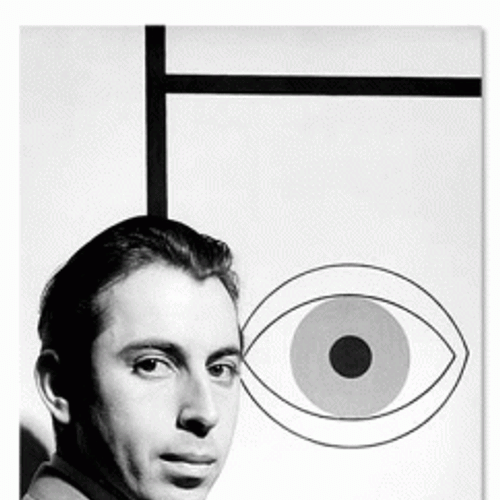Alvin Lustig
From “The Book Jackets of Alvin Lustig” by James Laughlin, Print Magazine, Oct/Nov 1956
The first jacket which Lustig did for a New Directions Book — the one for the 1941 edition of Henry Miller’s Wisdom of the Heart — was quite unlike anything then in vogue, but it scarcely hinted at the extraordinary flowering which was to follow. It was rather stiff and severe - a non-representational construction made from little pieces of type metal chosen from the cases in the experimental printing shop he had set up in the hinter regions of a drugstore in Brentwood. A less fecund talent might have been content to work that vein for years, but not Lustig. A few months later, I remember, he was showing me how he made extraordinary forms by exposing raw film to different kinds of light in a friend’s darkroom.
Whatever the medium, he could make it do new things, make it extend itself under the prodding of his imagination. What the true nature of that imagination was I never fully understood until the last year, when he had lost his sight, and when, to our amazement, he not only continued to work, directing the eyes and hands of his wife and assistants as if they were his own, but produced some of his finest pieces, such as the final cover design for the magazine Perspectives USA.
In the middle years, when opening each envelop from Lustig was a new excitement because the range of fresh invention seemed to have no limits, I had supposed that his gift was a purely visual faculty. Or, watching him play with a pencil on a drawing pad, I thought that he had some special magic in his hands. Only at the end, when I knew he could not see the forms evolving on paper, did I realize that his creative instinct was akin to that of the poet or composer. The forms took shape in his mind, drawn from a reservoir seemingly as inexhaustible as that of a Klee of Picasso.
Lustig’s solution of a book jacket problem was seldom a literary solution. He was no verbalizer; as a matter of fact, writing came hard to him. His method was to read a text and get the feel of the author’s creative drive, then to restate it in his own graphic terms. Naturally these reformulations were most successful when there was an identity of interest, but it was remarkable how far he could go on alien ground.
In discussions of values in art the positiveness of his assertions occasionally suggested egotism; he would submit himself to it fully and with humility. I have heard people speak of the “Lustig style” but no one of them has been able to tell me, in fifty words or five hundred, what it was. Because each time, with each new book, there was a new creation. The only repetitions were those imposed by the physical media.
I often wish that Lustig had chosen to be a painter. It is sad to think that so many of his designs must live in hiding on the sides of books on shelves. I would like to have his beautiful Mallarme crystal or his Nightwood abstraction on my living room wall. But he was compelled to work in the field he chose because he had had his great vision of a new realm of art, of a wider social role for art, which would bring it closer to each and every one of us, out of the museums into our homes and offices, closer to everything we use and see. He was not alone, of course, in this; he was, and is, part of a continuing and growing movement. His distinction lay in the intensity and the purity with which he dedicated his genius to his ideal vision.
